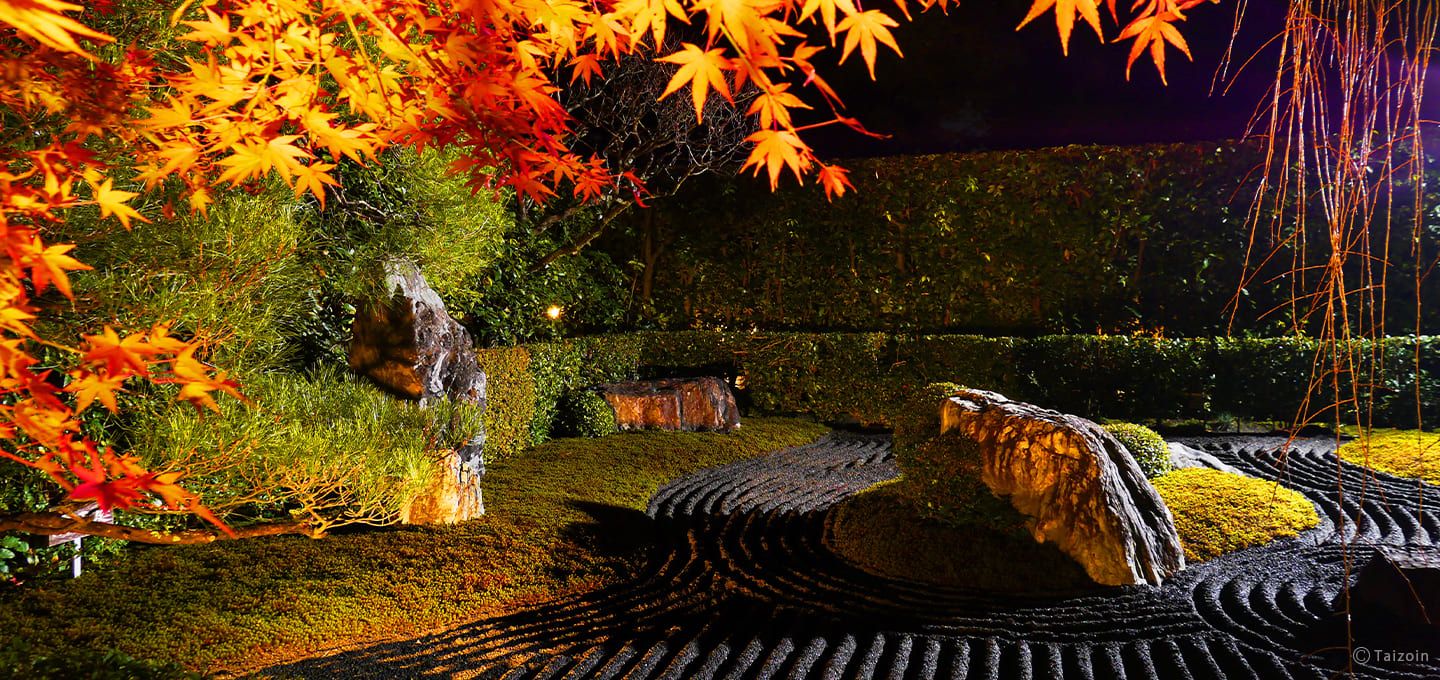
Special Experience
Kyoto
Enjoy Seasonal Delights and Japanese Spirituality through a Private After-hours Visit to a Zen Temple in Kyoto
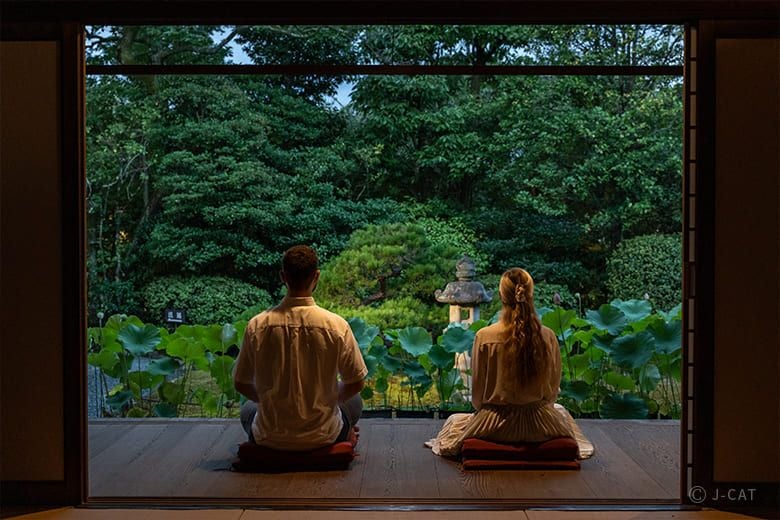
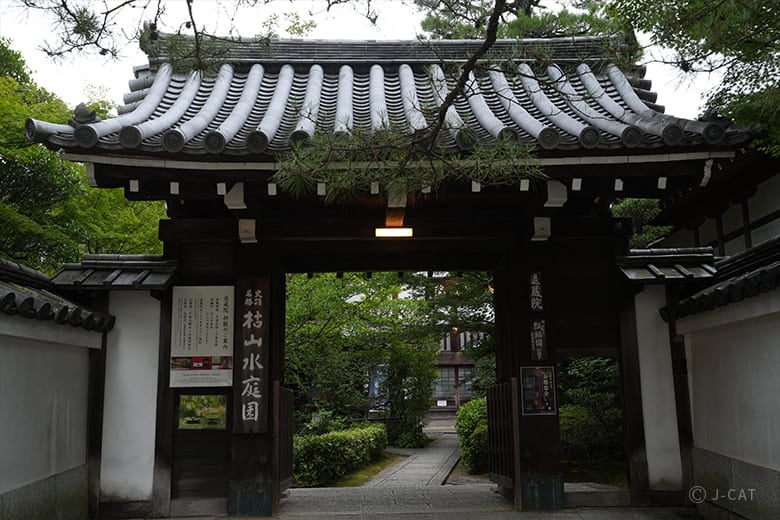
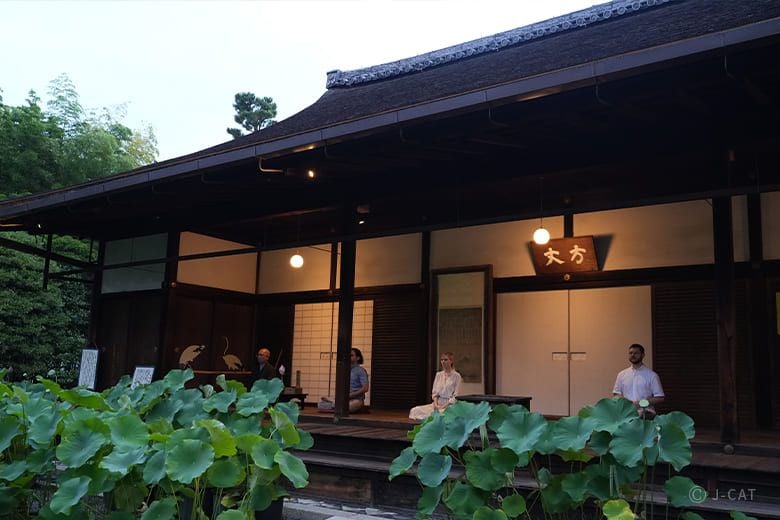
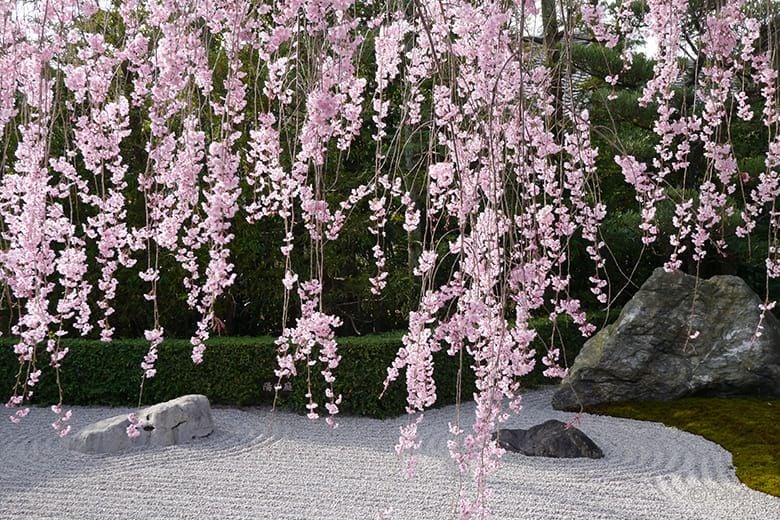
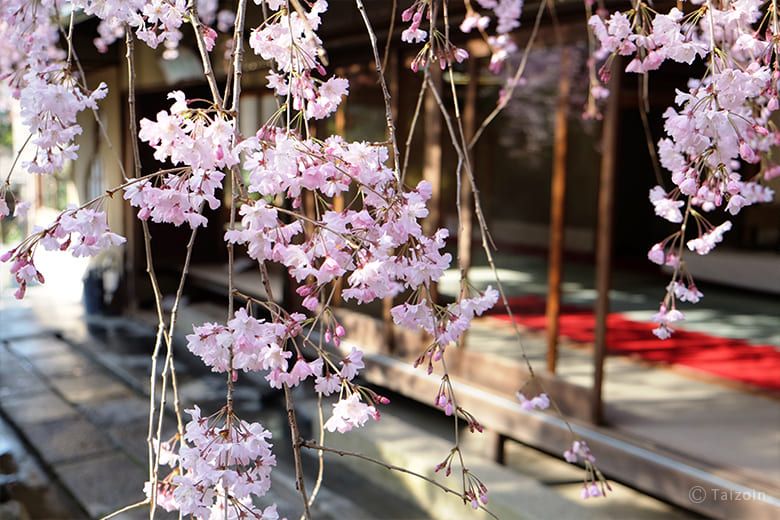
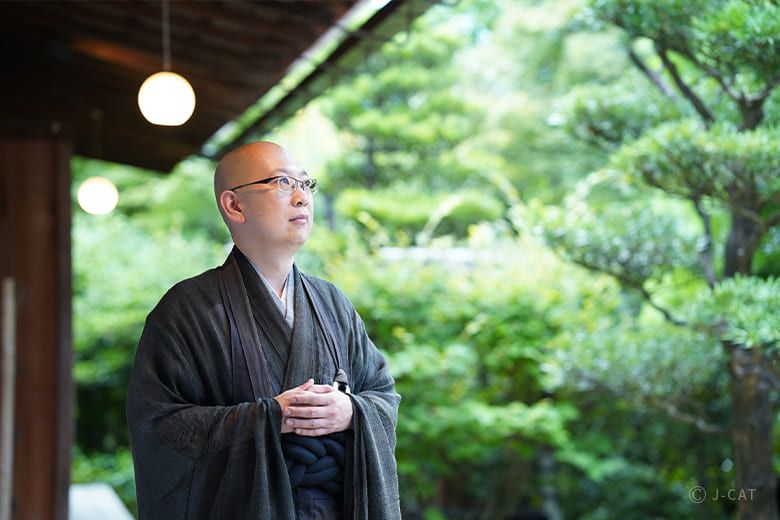
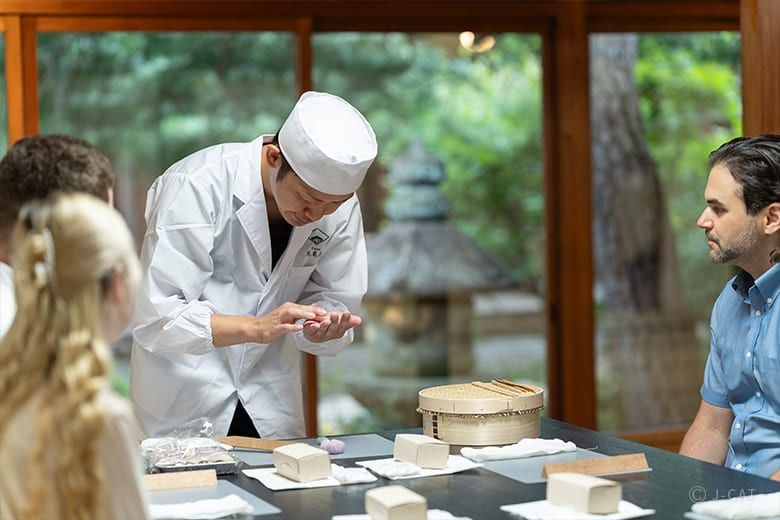
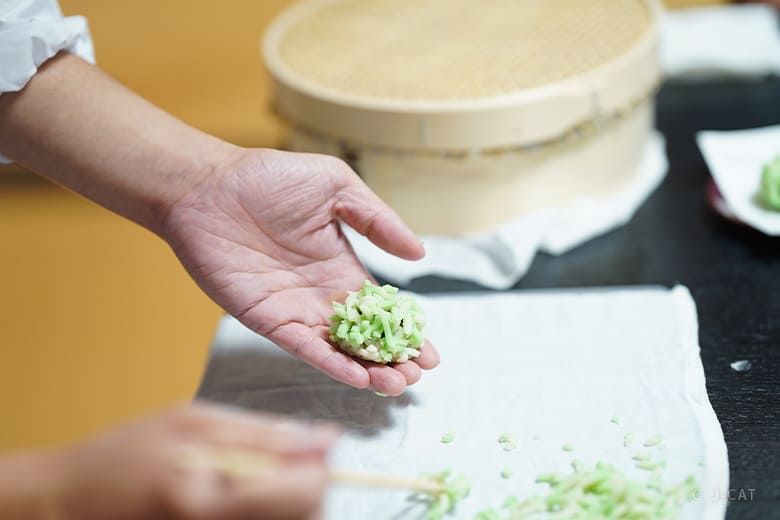
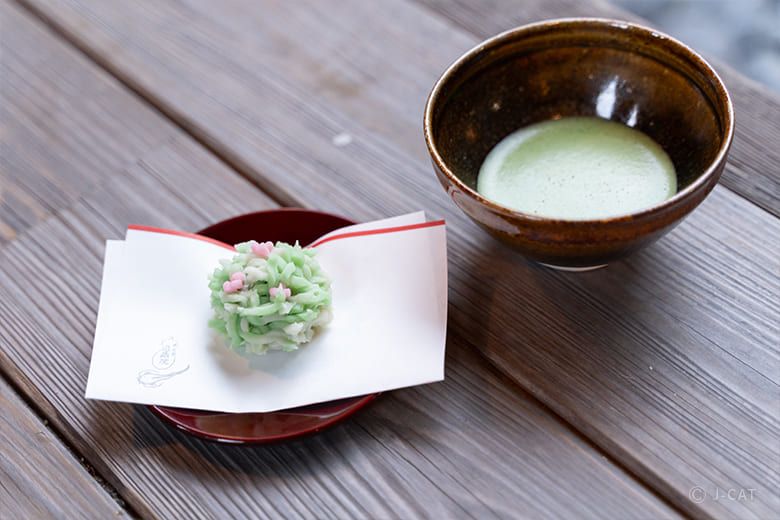
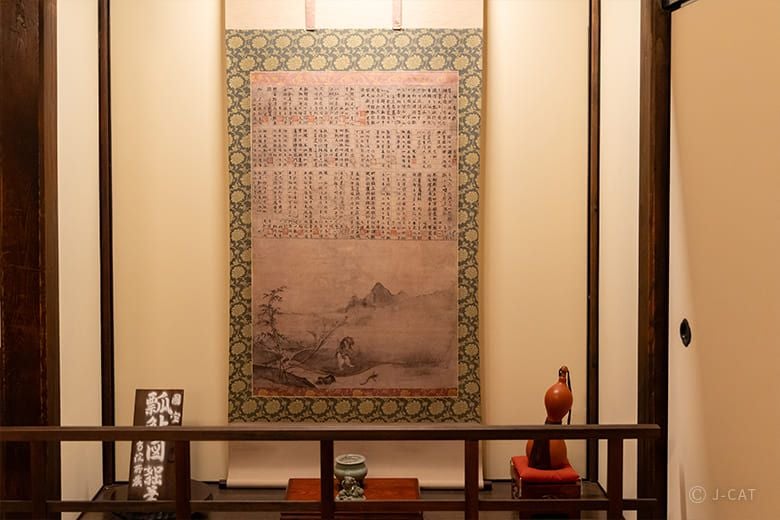
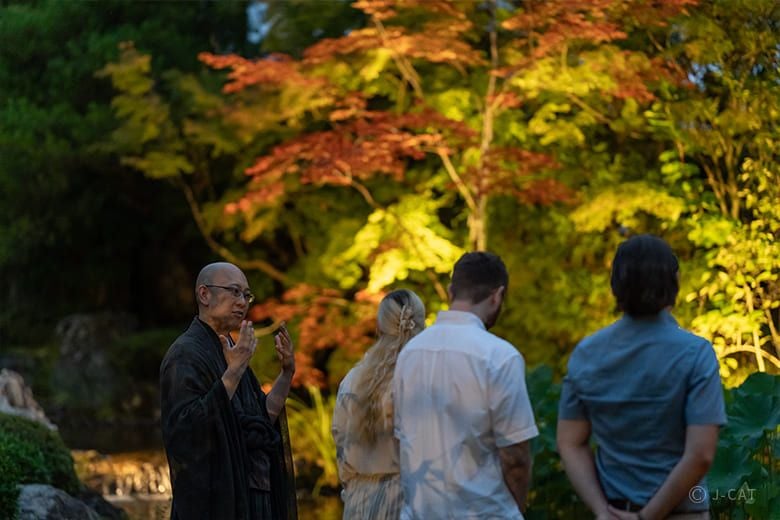
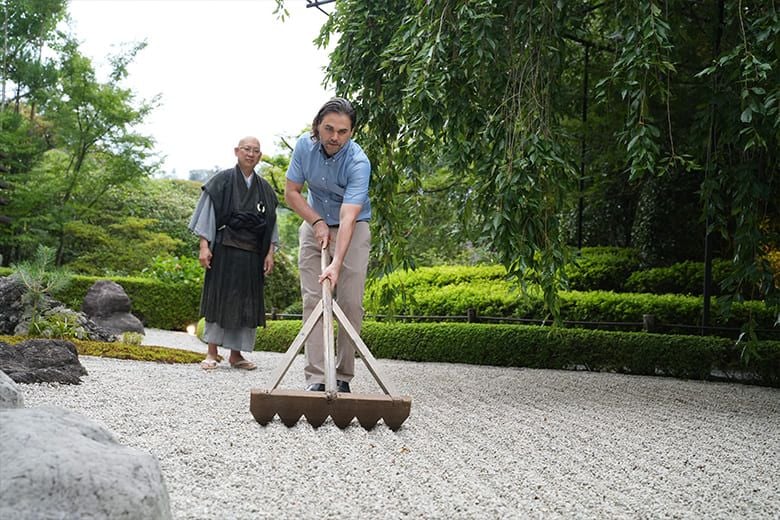
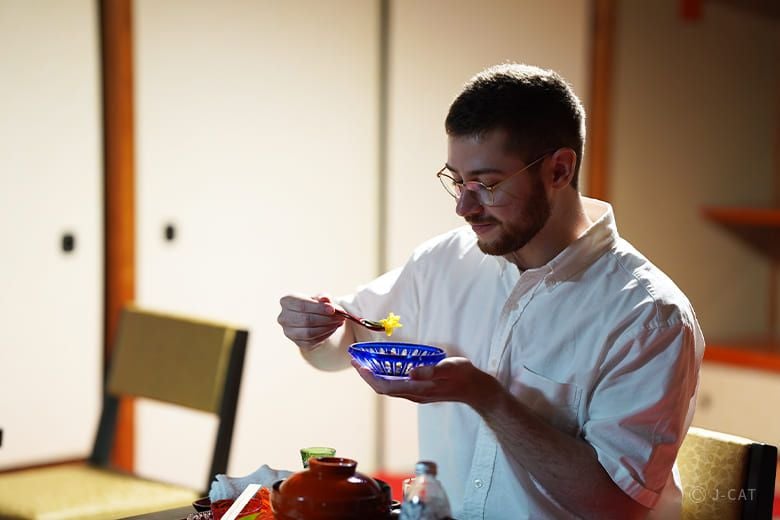
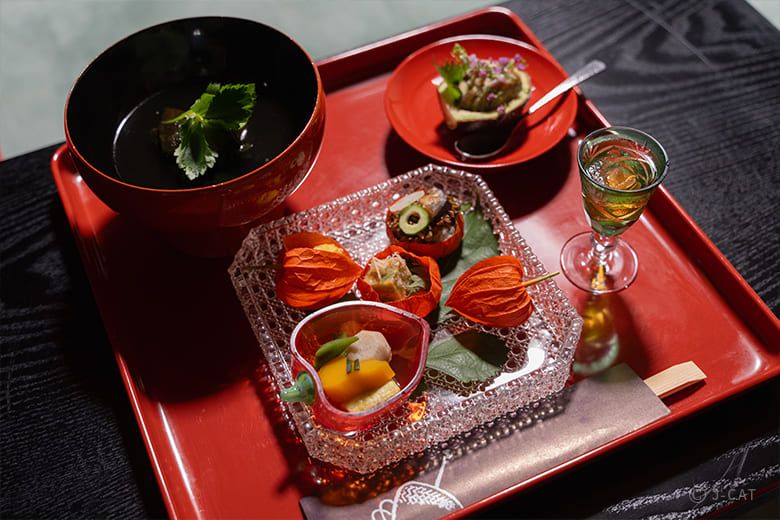
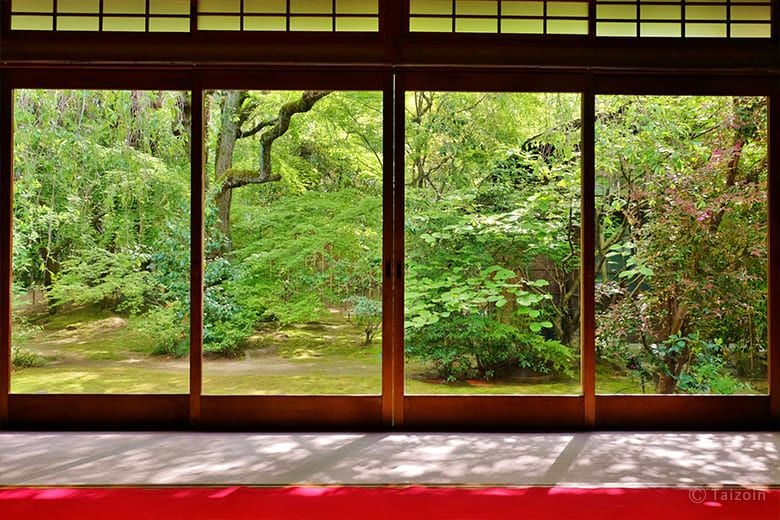















Overview
Experience a private after-hours visit to Taizo-in, part of Myoshin-ji, one of Japan’s largest Zen temple complexes. Deputy head priest Daiko Matsuyama, a Zen priest active in Zen Buddhist activities around the world, is your guide through the temple, its legendary garden, and a zazen meditation experience. Finally, a professional confectioner teaches you how to encapsulate that seasonal beauty and mindfulness in a traditional Japanese sweet-making lesson.
*From September 20th to December 10th, there will be an additional fee of 100,000 yen per group due to the peak season.
Key Features
・Admire an illuminated night view of the temple's gorgeous gardens and sumptuous natural scenery.
・Dive deep into the world of Zen with instruction from Deputy Head Priest Matsuyama, a globally active figure who has met with the former Catholic Pope.
・Learn the art of traditional seasonal Japanese confectionery from a visiting professional confectioner at the temple, and delight in the sweets you make alongside matcha green tea.
Kyoto
120mins
from ¥250,000 /group
1 - 10 participants
Available in English
Cancel free up to 15 days prior
Details
Taizo-in, among the main sub-temples of the Myoshin-ji Zen temple complex, the largest in Japan
Sprawling over a mountainous 31 hectares, the Myoshin-ji complex is collectively known as Japan’s largest Zen temple, and the head temple of its eponymous school of the Rinzai sect of Zen Buddhism. It encompasses 46 separate sub-temples on its grounds, and more than 3,000 branch temples around the world. Built in the early 15th century, Taizo-in boasts one of the longest histories among its sub-temples.
.jpg)
Taizo-in’s storied history spans 600 years.
The temple grounds also houses three gardens: “Motonobu no Niwa” (Motonobu’s Garden), a traditional “dry garden” (one of the traditional types of Japanese gardens, exhibiting the beauty of the landscape without ponds or other water features); a newer dry garden created in 1965 which has become famous in its own right; and “Yoko-en” (The Fragrant Garden), a water garden (the other type of traditional Japanese garden, designed for leisurely strolling around a pond). It also contains the national treasure Hyonenzu (“Catching a catfish with a gourd”), said to be the oldest ink wash painting by Josetsu, a Muromachi Period artist monk.

With his soft smile and calm tone, Deputy Head Priest Daiko Matsuyama exudes a solemn but warm gravitas.
The deputy chief priest of Taizo-in, Daiko Matsuyama, is your guide through the practice of zazen and a tour of the gardens. He is globally active as a representative and leader in Japanese Zen Buddhism, and has to his name an audience with a former Pope and attendance at the World Economic Forum’s annual Davos Conference. He continually strives to impart a spirituality beyond the borders of separate religions or nations, and in this exclusive plan you will enjoy learning privately from Matsuyama himself about the essence of enlightenment, and Japanese temple architecture and garden culture.
“Sightseeing in Kyoto has evolved over the past 30 years from a focus on seeing to a focus on doing,” says Matsuyama. “More and more people today are in search of spirituality, as our information society leaves us with fewer and fewer ways to be mindfully present in our lives through all five senses. I hope to offer Taizo-in to those people as a tranquil, verdant space of reflection and self-discovery.”
Touch the world of Zen, and get in touch with your five senses
After sunset, when the gates of the temple have closed to the public, the veranda of the abbot’s quarters of Taizo-in becomes a place of zazen meditation. This is Zen: a ritual focus on posture, breathing, and state of mind to directly experience life. Listen to insects chirping, feel the touch of the wind, become one with nature, and discover a pure and clear state of mind.

Approaching the Buddha’s enlightened state of mind through zazen meditation
“Through zazen meditation, I hope you will rediscover that the ‘information’ we encounter living in our ‘information society’ is not reality, and reacquaint yourself with the world through your own senses,” says Matsuyama.
Brush up against enlightenment and Japanese aesthetics with an exclusive tour through the temple
Move next to the abbot’s quarters of Taizo-in, not usually accessible to the public. Here, view the 15th-century ink wash painting Hyonenzu, or “Catching a catfish with a gourd.” This historical national treasure depicts a koan and humorous Zen riddle alongside the real answers of thirty-one different Zen masters, depicted as a Chinese poem. Matsuyama unravels the mysteries behind this piece and what it has to say about the nature of enlightenment in Zen Buddhism.

Matsuyama elucidates how the gourd parable conveys one essence of enlightenment.
Discovering the craft of traditional Japanese confectionery, feeling Japan through its seasons
Following the temple tour, get hands-on in a traditional Japanese confection-making experience in a private room usually inaccessible to the public. The popular craft confectioner Yusuke Nishizawa, founder of Kyoto sweets shop Tokiya and former apprentice at Kameya Yoshinaga, a historic Kyoto confectionery founded in 1803, makes a special visit to the temple for each session. Under his direct guidance, learn the intricate and subtle techniques of traditional Kyoto confection making.

Make authentic Kyoto confectioneries in a part of the temple not normally open to the public.
The culture of Japanese traditional confectionery draws inspiration from the four seasons, drawing colors and design motifs from their flowers and plants to create a feast for the eyes alongside its delicious flavors. Regionally, Kyoto’s sweets are known for embracing a more abstract and fanciful visual style, and this comes across in spades as you watch Nishizawa gently shape his confections into works of art. Cherish the seasons as you follow his lead.

You can feel Nishizawa’s love for his craft as he walks you through each step of the process.
Nishizawa will also demonstrate the craft of creating “kinton,” a premier confection made from sweet red bean paste. Kinton comes in different colors and shapes depending on the season, and is meant to express the polychromatic charm of nature. This experience in traditional Japanese confectionery will deepen your appreciation for how important seasonality is at every level of the country’s culture.

Take in the temple’s legendary garden alongside fresh, handmade Japanese sweets and rich, silky-smooth matcha tea.
When all this is finished, enjoy eating sweets with a pairing of matcha green tea while overlooking the garden. You can also take home your own creation and Tokiya’s original dried confection as souvenirs to enjoy after the experience.
Stroll through the Nigt-Lit Garden
After making Japanese confections, you can peruse “Motonobu’s Garden” – a unique dry landscape garden of perennial shrubs, modeled on the theme of “immutability” – and stroll through “The Fragrant Garden,” a night-lit pond.

Enjoy a private visit to the 3306 square-meter Fragrant Garden, and a leisurely amble around its pond while listening to Matsuyama’s commentary.
The Fragrant Garden stands in contrast to the muted tranquility of Zen with its dazzling seasonal colors – spring’s weeping cherry blossoms; summer’s blooming lotus petals; the russet and amber leaves of autumn. It is centered around a gourd-shaped pond containing koi fish – and yes, a catfish – a motif evoking the temple’s treasured painting and its associated koan.
The deputy head priest himself offers commentary on the soul of Japanese beauty, while you have the elegant garden completely to yourself. This is a precious chance to experience both Zen and Japan’s aesthetic sensibilities.
Try your hand at painting the rock garden, and enjoy Michelin-starred Buddhist vegetarian cuisine.
As a Wabunka exclusive optional add-on (for an additional fee), you can try painting the Rock Garden of Yin and Yang, designed around fifteen large stones: eight representing yin, and seven representing yang, in different colored sands which represent the nested dualities of the universe and the human heart.

Raking straight lines is unexpectedly challenging in this microcosmic garden of yin and yang.
As another optional add-on (for an additional fee), you can follow your garden tour with a Buddhist vegetarian multi-course meal of seasonal dishes prepared by the renowned restaurant “Ajiro,” which overlooks the night-lit garden.

The meal is a captivating work of art, opening with appetizers and an aperitif.
Self discovery, far removed from the daily grind
“Kyoto may be a bustling city, but it’s also a historical religious center offering tranquil repose,” says Matsuyama. “As more and more visitors come seeking this side of it in recent years, a sense comes across of the difficulties people are feeling in their day-to-day lives of facing the big questions: What am I living for? What is happiness? In this experience, I hope to offer people a chance to get more in touch with themselves.” Here, you can also get in touch with Japan’s nature, its aesthetics, and Buddhist views on the universe and enlightenment – with all five senses.

Experience nature unfurling before you with all five senses
Taizo-in Temple at Myoshin-ji

Taizo-in Temple at Myoshin-ji
Founded in 1404 as a part of the Myoshin-ji Temple Complex, Japan’s largest, Taizo-in Temple was destroyed by fire during the Onin War (a 15th-century civil war and succession crisis centered in Kyoto). In 1597, it was rebuilt by Zen Priest Kinen and has remained in operation ever since. Within its grounds are the national treasure Hyonenzu, or “Catching a catfish with a gourd,” by Josetsu Tsuhitsu, an early historical example of ink wash painting, and the equally historical gardens Motonobu’s Garden, a dry garden designed by Motonobu Kano, and Yoko-en (“The Fragrant Garden”), one of the most famous wet gardens in the entire country.
Location
Taizo-in Temple at Myoshin-ji
Ukyo Ward, Kyoto
Request for booking
Select first preferred date (JST)
December 2025
Sun
Mon
Tue
Wed
Thu
Fri
Sat

Instant Booking

Request Booking

17
Full

17
Unavailable
Kyoto
120mins
from ¥250,000 /group
1 - 10 participants
Available in English
Cancel free up to 15 days prior
Things to know
Contact Us
If you have any questions, please contact us using the form below.
We also accept bookings from corporate clients and travel agencies.